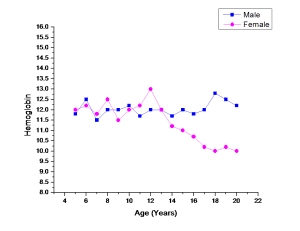(Formerly #4)
Here’s a must read by Kate Clancy who de-bunks the popular myth that women engaged in menstruation will have develop iron-deficiency anemia.
Read more here.

Nothing could be further from the truth. If your health care provider believes that being female automatically means iron deficient anemia (IDA), this may be a red flag pointing to a need for a deeper understanding of how the body works.
The more I read, the more I learn about iron overload caused by copper deficiency (as in lack of ceruloplasmin), the more convinced I am that mineral dysregulation is at the base of most, if not all chronic diseases. It has profound implications for magnesium, copper, calcium, oestrogen, thyroid function etc.
Copper is the key to the activation of the enzyme needed to make Estrogen. When copper is not so proper, (i.e. lack of the key anti-oxidant, ceruloplasmin) it gets bound to estrogen as it, too, is an anti-oxidant.
So, what is the connection to Iron? Please review this article:
Broderius, M., et al. (2012). “Suppressed hepcidin expression correlates with hypotransferrinemia in copper-deficient rat pups but not dams.”
https://www.ncbi.nlm.nih.gov/pmc/articles/PMC3380187/pdf/12263_2012_Article_293.pdf
There are many switchbacks in that study, but suffice it to say that estrogen has an effect on hepcidin, which affects iron metabolism. I have not sorted this entire mechanism out, as hepcidin works best with proper copper, and I’m just now getting my head around the estrogen >> hepcidin >> ferroportin angle.
Hope you find this blog as enlightening as I did this morning.
A votre santé!
MORLEY M. ROBBINS
If you would like to read the original discussion thread on Facebook, please head here.
